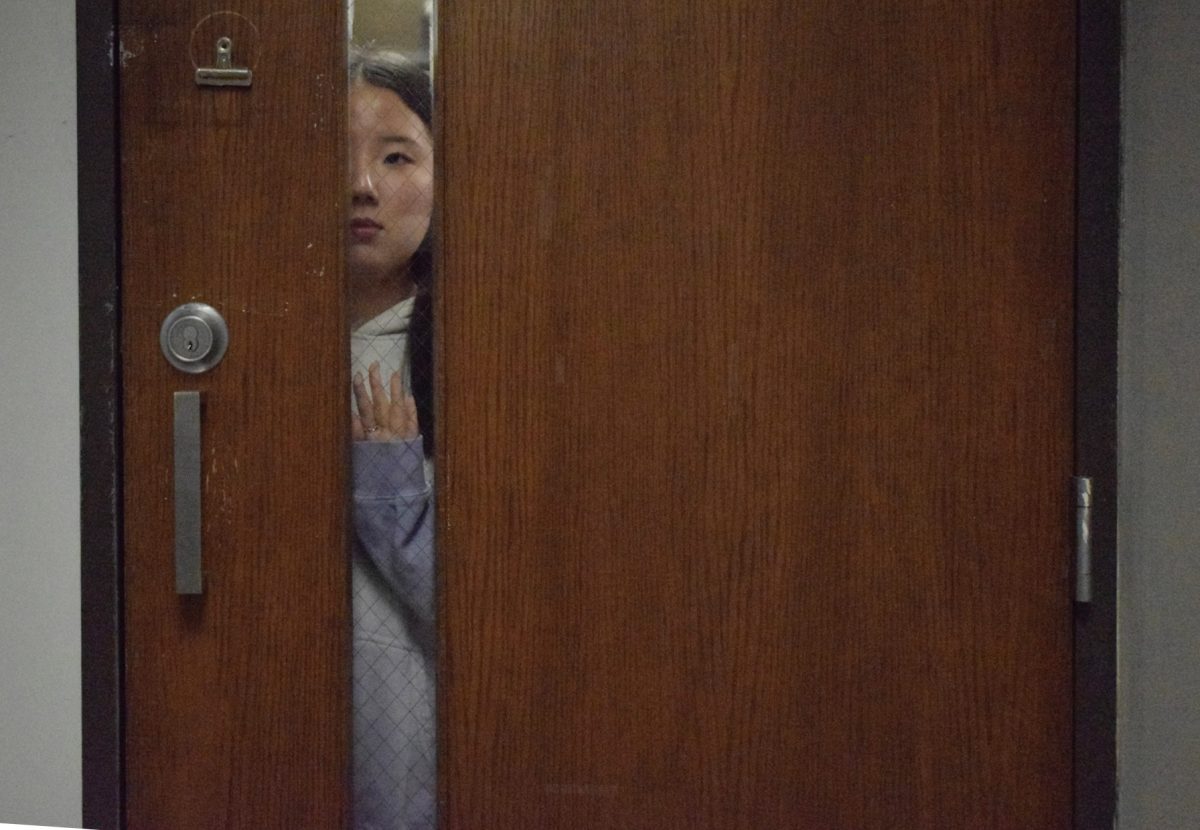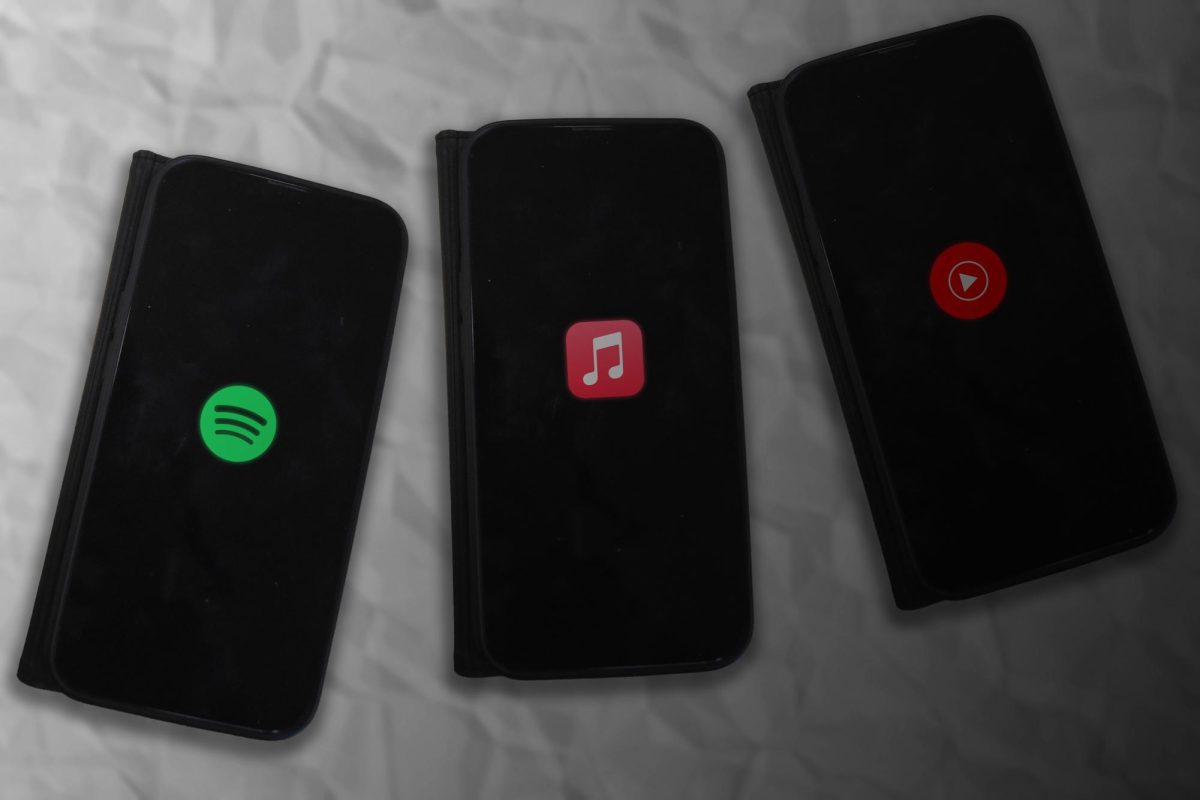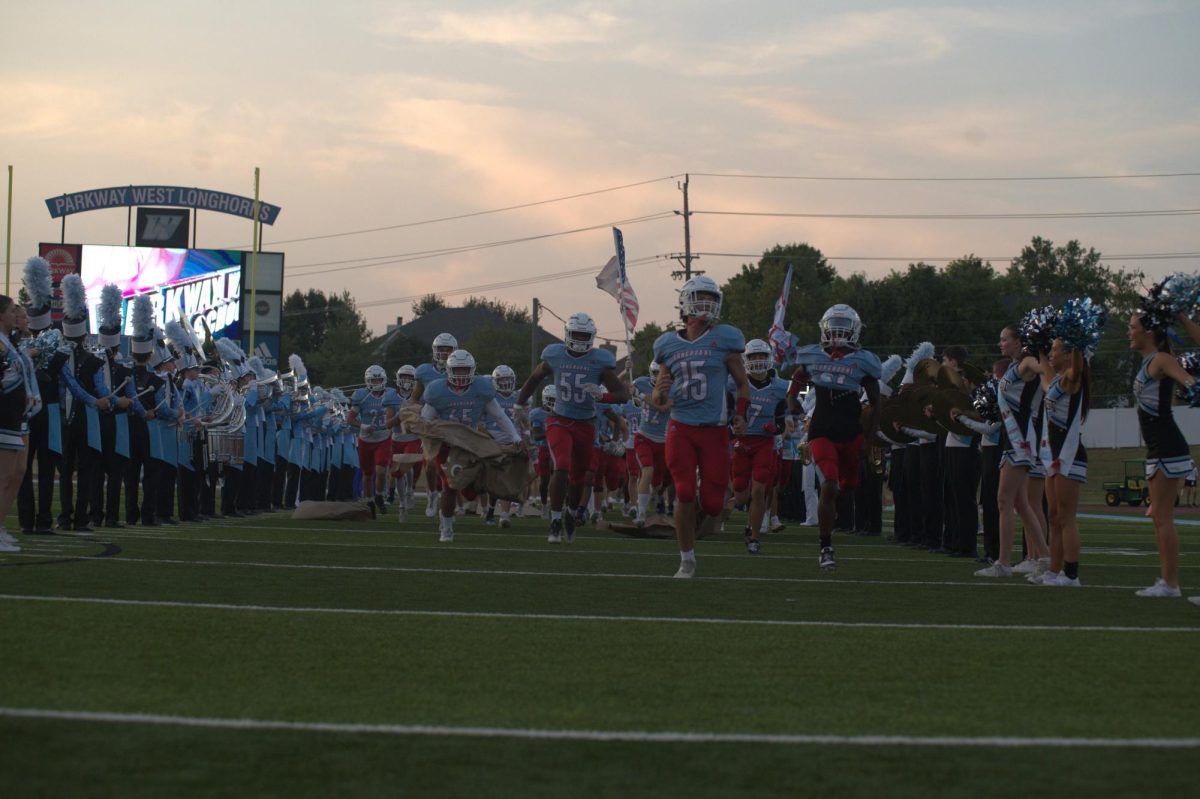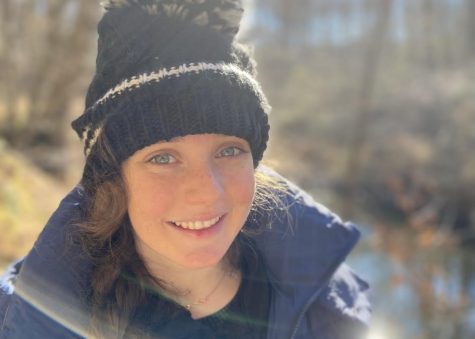As technology plays a growing role in our lives, so too does data. On the internet, virtually every click, scroll and like is tracked, often used to maximize your engagement. But as it turns out, other forms of data ŌĆö criminal history, income, even locationŌĆö are used in the criminal justice system to determine who gets stopped and who goes free.┬Ā
The problem, however, is that although the numbers seem innocent, their backstory reveals a much more nuanced and disturbing truth: the data used in these seemingly harmless, objective policing systems perpetuates racial bias in criminal justice, especially against Black communities.┬Ā
Today, weŌĆÖll explore some history that most of us donŌĆÖt learn in school: racist mid-20th century housing policies known as redlining ŌĆö the dark, discriminatory underside of the New Deal ŌĆö and racial profiling in policing. Next, weŌĆÖll unpack the effect of these historical discrimination tactics in modern crime data. Finally, weŌĆÖll look at how racially-biased crime data is used in high-tech criminal justice ŌĆö predictive policing ŌĆö and how it treats poor racial minorities unfairly. In the criminal justice system, any form of injustice ought to be abolished.┬Ā
The New Deal and Redlining
In 1933, between the two world wars, the US faced an unforgiving beast: the Great Depression. Banks were failing, people were starving and the housing market was running dry.┬Ā
To combat this economic crisis, President Franklin D. Roosevelt proposed the New Deal, creating the Federal Housing Administration (FHA) and the HomeownerŌĆÖs Loan Corporation (HOLC) among other progressive reforms. The FHA aimed to create new housing while minimizing financial risk, but ended up segregating America.┬Ā
Through policies known as redlining, the FHA refused to back mortgages in or near African-American neighborhoods because of perceived economic riskiness. The HOLC colored these ŌĆśhazardousŌĆÖ areas on the map in red.┬Ā
These efforts were ŌĆ£primarily designed to provide housing to white, middle-class, lower-middle-class families,ŌĆØ Richard Rothstein explained in his book ŌĆ£The Color of Law.ŌĆØ It was a ŌĆ£state-sponsored system of segregation.ŌĆØ A May 2017 NPR article added that ŌĆ£at the same time, the FHA was subsidizing builders who were mass-producing entire subdivisions for whites ŌĆö with the requirement that none of the homes be sold to African Americans.ŌĆØ┬Ā
Redlining created a network of discrimination in virtually every American city. Racist housing policies left Black people with poor housing and no federal investment or funding to improve the conditions. ŌĆ£Whites-onlyŌĆØ neighborhoods increased the economic and social status of white people while forcing racial minorities into low-quality, underfunded neighborhoods.
In one case, Harvey Clark, a Black World War II veteran, tried to move into ChicagoŌĆÖs all-white Cicero neighborhood in 1951. The police harassed his family and threatened arrest, but the court ordered that the Clarks be allowed to move in. As soon as they did, a white mob of around 4,000 invaded and pillaged the apartment, throwing out the ClarksŌĆÖ belongings and eventually setting the place on fire. Over 100 people were arrested, but instead of indicting the rioters, the grand jury indicted Clark, his real estate agent, his attorney and the white landlady who rented to him. The offense? Inciting a riot and attempting to lower property values, as Rothstein notes in ŌĆ£The Color of Law.ŌĆØ┬Ā
Although the Fair Housing Act of 1968 effectively made redlining illegal, segregation still remained. Also, notice how the police in ClarkŌĆÖs story threatened his family with arrest in the beginning, even though they did nothing wrong. This fits into a broader pattern of police targeting racial minorities, with or without the intention to do so, a practice still evident to this day. ItŌĆÖs better known as racial profiling.┬Ā
Racial Profiling
Racial profiling is by no means new. ItŌĆÖs been a fact for African-Americans since the first organized police force: the slave patrol, founded in 1704 in South Carolina. Its job, you can probably guess, was to hunt down enslaved African and African-American people on the run to freedom. It was a heavily-imposed social control on African-Americans and was undoubtedly race-based. As policing evolved, this racial bias and over-policing of Black people persisted and evolved with it.┬Ā
Fast-forward to the 1980s. When making efforts to halt drug smuggling, Florida State Trooper Bob Vogel started to notice factors that kept arising when he stopped a driver and found drugs. The 1985 Florida guidelines for police on ŌĆ£The Common Characteristics of Drug CouriersŌĆØ noted that rental cars, ŌĆ£scrupulous obedience to traffic laws,ŌĆØ drivers wearing ŌĆ£lots of goldŌĆØ or who donŌĆÖt ŌĆ£fit the vehicle,ŌĆØ and ŌĆ£ethnic groups associated with the drug trade,ŌĆØ were profiles police should be suspicious of. What? Police were encouraged to use this overtly racialized profile in stops.┬Ā
However, Vogel didnŌĆÖt include the times the drivers were innocent. Had he included these interactions in his list, the proportion of innocent people matching the profiles may have outweighed the guilty drivers. Because he didnŌĆÖt, his assumptions were baseless.┬Ā
Drug enforcement by minor traffic violations is technically legal because under the Fourth Amendment to the U.S. Constitution, once police stop someone for a traffic violation, they can then investigate other crimes such as drug trafficking. They just wait for a suspicious-looking vehicle or driver to commit any minor traffic violation, then pounce.┬Ā
ItŌĆÖs often hard for drivers to make racial discrimination accusations because those charges fall under the 14th AmendmentŌĆÖs Equal Protection Clause, which requires a long, expensive civil lawsuit with no success guaranteed. Many people simply donŌĆÖt have the time or the money required to pursue legal action.
Vogel received much positive national media attention for identifying the drug courier profiling factors. And in 1986, the Drug Enforcement Agency introduced profiling techniques to highway patrolling nationwide that implicitly encouraged targeting of nonwhite drivers. In the same year, the DEA also initiated Operation Pipeline to train tens of thousands of officers across the nation how to use traffic stops as a pretext for drug and weapon searches. These tactics especially affect poor racial minorities, even in St. Louis.
A report by the Associated Press in 2019 found that Black Missouri drivers are 91% ŌĆö┬Ā almost two times more likely ŌĆö to be stopped by the police than white drivers. TheyŌĆÖre even more likely to be stopped in their own communities, segregated through racist policies like redlining. Among St. Louis County drivers, Black drivers are over twice as likely to be pulled over compared to whites. Among Kansas City residents, Black drivers are almost three times as likely to be stopped.┬Ā
The data is clear: disproportionate policing is undoubtedly present in MissouriŌĆÖs police forces, whether or not itŌĆÖs intentional.┬Ā
Interestingly enough, a recent five-year Stanford study analyzed over 95 million traffic stops across the nation and found that while Black people ŌĆ£tend to get pulled over more frequently than whites, the disparity lessens at night, when a ŌĆśveil of darknessŌĆÖ hides their face,ŌĆØ and their race. Clearly, Black drivers face a higher likelihood of being stopped by the police, especially when their highly-melanated skin is visible in the daylight.┬Ā
Instead of leaving implicit or explicit racial prejudice in the past, however, automated predictive policing algorithms perpetuate these biases in the modern era of high-tech policing.┬Ā
Predictive Policing
Algorithms claiming to predict the time and place of future crimes use racially biased historical crime data to spit out location targets for police to patrol. Instead of replacing human bias with an objective data-driven solution, these algorithms only perpetuate historical racial disparities in policing, caused in part by racial wealth gaps resulting from redlining and inaccurate racialized criminal profiles from the ŌĆśwar on drugs.ŌĆÖ
In 2015, Aaron Shapiro went on a three-hour ride-along with a St. Louis County police officer in the suburbs around Ferguson, Mo. to test out a predictive policing program the department was about to start using. Because of racist housing policies like redlining, itŌĆÖs a highly segregated, majority Black region. Shapiro had just started researching predictive policing, an algorithm that uses historical data to predict when and where crime is most likely to occur next. ItŌĆÖs a good idea ŌĆö in theory.┬Ā
During the ride-along, Shapiro noted how ŌĆ£unremarkable predictive policing is in practice.ŌĆØ The officer drove to the marked areas that the algorithm highlighted, looked for suspicious activity and then left. In one instance, Shapiro said ŌĆ£the officer spotted a rental car and tailed it for a few blocks. Rentals, he explained, can be a sign of trouble.ŌĆØ Sounds a lot like VogelŌĆÖs descriptions. ŌĆ£When the driver turned without using his signal, we pulled him over, using the traffic violation as a pretext.ŌĆØ After looking at the driverŌĆÖs license and registration, the officer called for assistance because he smelled marijuana. After searching and not finding any, the police let the driver go.┬Ā
This interaction was typical ŌĆ£war on drugsŌĆØ style, using a minor traffic violation as a pretext for drug searches. The area around Ferguson is predominantly Black and low-income ŌĆö the median income is $41,657ŌĆö a combination that yields racially biased traffic stops and subsequent searches. Cars are expensive, and due to redlining policies that economically excluded people of color from accruing wealth over time, they are less likely to own a car. For those on a tight budget, rentals or cheaper, lower-quality used cars are a great option. But these cars can also be targets for police.
Even though data shows that white people are more likely to possess drugs, Black people are the ones caught for it since they have a higher stop and arrest probability. White drivers just arenŌĆÖt getting stopped as often. This unfair pattern is perpetuated with predictive algorithms.
The St. Louis County Police Department has been using a predictive policing program called HunchLab since 2015, in the aftermath of Michael BrownŌĆÖs death in Ferguson and the protests that ensued.┬Ā
Predictive policing is only as accurate as the data itŌĆÖs fed, which often disproportionately contains racial minorities. To make statistically accurate crime predictions, the algorithm takes in historical data of crime records and outputs the patterns, the times and places crime is most likely to occur.┬Ā
From the outside, itŌĆÖs a fair, objective way to predict and prevent future crime. However, the historical data is not objective, creating biased targets even if police officers were completely unbiased. WhatŌĆÖs more, scholars have proven the algorithms to be ŌĆ£fundamentally flawed.ŌĆØ┬Ā
Since poor minority neighborhoods have historically been racially profiled and overpoliced, the data put into the algorithm marks these areas more, continuing the cycle in whatŌĆÖs known as a ŌĆ£runaway feedback loop.ŌĆØ┬Ā Biased inputs lead to biased outputs that are justified when the police catch a criminal.
The result: disproportionately higher arrest rates in historically overpoliced neighborhoods get put back into the algorithm. This data is then used to justify continuing to disproportionately target these neighborhoods. And so the wheel of injustice rolls on.┬Ā
ItŌĆÖs important to note that some people in communities with high crime rates feel more policing is necessary. Reacting to The Marshall ProjectŌĆÖs investigative piece on predictive policing, one commenter noted that ŌĆ£as one who lived and worked for over 30 years in a high-crime, predominantly Black inner-city neighborhood, the increased presence of police in the high crime area ŌĆ” was welcomed and sought.ŌĆØ┬Ā
ItŌĆÖs also important to note that the technology doesnŌĆÖt factor in race. But because of redlining, the systematic segregation and disinvestment in communities of color by the federal government, geography and income are proxies for race. Poor neighborhoods are more often populated by minority groups, and wealthy neighborhoods are generally populated by white people.┬Ā
ŌĆ£ItŌĆÖs a vicious cycle,ŌĆØ John Chasnoff, program director of the Eastern Missouri American Civil Liberties Union chapter said. ŌĆ£The police say, ŌĆśweŌĆÖve gotta send more guys to North CountyŌĆÖ because there have been more arrests there, and then you end up with even more arrests, compounding the racial problem.ŌĆØ┬Ā
Chasnoff proposed a solution. He said, ŌĆ£I donŌĆÖt think anyone, in the abstract, has a problem with figuring out where crime is and responding to it. But whatŌĆÖs the appropriate response? The assumption is: we predicted crime here, and you send in police. But what if you used that data and sent in resources?ŌĆØ┬Ā
Former St. Louis County Police Chief Jon Belmar, who retired in 2020, agreed that other resources are necessary. ŌĆ£We canŌĆÖt just have the criminal justice system solve our problems,ŌĆØ┬Ā he said.┬Ā
Fortunately, police departments across the nation have begun to take action against these unfair algorithms. New Orleans shut down its program in 2018 that operated for six years without public knowledge. Chicago followed suit in 2020. The same year, Santa Cruz, Calif. banned predictive policing. In St. Louis, however, the program is still active. And some cities are adopting systems that predict not which places but which people are more likely to commit a crime, based on age, gender, criminal history and other factors.┬Ā
We can all agree that community safety is of utmost importance, and stopping crime before it happens would make a lot of peopleŌĆÖs lives better. But with the tools we have now that perpetuate historical inequities by continuing to overpolice minority neighborhoods in a runaway feedback loop, we have to ask, ŌĆ£at what cost?ŌĆØ
If the cost is increased racial profiling through this biased technology that hides behind a fa├¦ade of objectivity and fairness, is it worth it? If the technology in the criminal justice system is inherently biased, is it really creating justice?
Maybe technology isnŌĆÖt the answer to all of our problems. Maybe weŌĆÖd be better off going back to face our unsettling past and move forward from there. Data-driven technology like predictive policing is a reflection of our history, the good and the bad. So, for the time being, we have to take a good look at the continuing history of bias and discrimination in our justice systems before handing over the reins to technology. Just like we have to push backward on the floor to walk forwards, we have to go back and understand the past to move forward as a community, nation and world.┬Ā
Throughout history, our national systems have denied justice for Black people. Slavery and the slave patrol denied them the right to freedom, a fundamentally American value. Racist mid-20th century housing policies made homeownership and good quality, affordable housing nearly impossible to attain, widening the racial wealth gap. Most recently, the ŌĆśwar on drugsŌĆÖ exacerbates racial profiling in policing, in part because suspicious-looking vehicles ŌĆö rental cars and cheap used cars in semi-disrepair ŌĆö are targets, and are more prevalent among people who donŌĆÖt have the money to buy a new car or pay for repairs. And because of redlining, low-income neighborhoods are generally populated by racial minorities. Regardless of individual police officersŌĆÖ beliefs and actions, the entire system indisputably works against Black people. Adding technology to the mix doesnŌĆÖt fix these inherent structural issues.┬Ā
In an institutional framework that continues to deny Black people their civil liberties, itŌĆÖs no surprise that seemingly objective technologies used within these unjust structures only perpetuate and augment injustice. Bias existed before predictive policing and only continues and grows with the technology. Future policing innovations will also claim to provide an unbiased, data-driven approach to high-tech policing. But based on our criminal justice systemŌĆÖs 300+ year track record of malicious actions towards racial minorities, how can we be so sure? Ultimately, justice hinges on who owns the algorithms.┬Ā
To truly ensure liberty and justice for all, we must either dramatically change the objective of predictive policing tools to uplift communities by sending in essential resources, or eliminate these machines of injustice altogether. Either way, justice for Black Americans is long overdue.
For more information on how technology can endanger human rights, you can check out the critically-acclaimed Coded Bias documentary that is now available on Netflix and the free PBS app.┬Ā




![Sitting courtside before a junior varsity girlsŌĆÖ tennis match, senior Tanisi Saha rushes to finish her homework. Saha has found herself doing academic work during her athletic activities since her freshman year. ŌĆ£Being in sports has taught me how to stay organized and on top of my schoolwork. [With] a busy practice and game schedule, IŌĆÖve learned to manage my homework and study time better,ŌĆØ Saha said.](https://pwestpathfinder.com/wp-content/uploads/2025/11/DSC_0022-1200x800.jpg)
![Sophomore Maryem Hidic signs up for an academic lab through Infinite Campus, a grading and scheduling software. Some students enjoyed selecting their responsive schedule in a method that was used school-wide last year. ŌĆ£I think it's more inconvenient now, because I can't change [my classes] the day of, if I have a big test coming and I forget about it, I can't change [my class],ŌĆØ sophomore Alisha Singh said.](https://pwestpathfinder.com/wp-content/uploads/2025/10/DSC_0012-1200x801.jpg)
![Senior Dhiya Prasanna examines a bottle of Tylenol. Prasanna has observed data in science labs and in real life. ŌĆ£[I] advise the public not to just look or search for information that supports your argument, but search for information that doesn't support it,ŌĆØ Prasanna said.](https://pwestpathfinder.com/wp-content/uploads/2025/10/DSC_0073-2-1200x800.jpg)
![Junior Fiona Dye lifts weights in Strength and Conditioning. Now that the Trump administration has instituted policies such as AI deregulation, tariffs and university funding freezes, women may have to work twice as hard to get half as far. "[Trump] wants America to be more divided; he wants to inspire hatred in people,ŌĆØ feminist club member and junior Clara Lazarini said.](https://pwestpathfinder.com/wp-content/uploads/2025/05/Flag.png)
![As the Trump administration cracks down on immigration, it scapegoats many immigrants for the United StatesŌĆÖ plights, precipitating a possible genocide. Sophomore Annabella Whiteley moved from the United Kingdom when she was eight. ŌĆ£ItŌĆÖs pretty scary because IŌĆÖm on a visa. When my visa expires next year, IŌĆÖm not sure whatŌĆÖs going to happen, especially with [immigration] policies up in the air, so it is a concern for my family,ŌĆØ Whiteley said.](https://pwestpathfinder.com/wp-content/uploads/2025/05/DSC_0077-7copy.jpg)
![Shifting global trade, President Donald TrumpŌĆÖs tariffs are raising concerns about economic stability for the U.S. and other countries alike. ŌĆ£[The tariffs are] going to pose a distinct challenge to the U.S. economy and a challenge to the global economy on the whole because it's going to greatly upset who trades with who and where resources and products are going to come from,ŌĆØ social studies teacher Melvin Trotier said.](https://pwestpathfinder.com/wp-content/uploads/2025/05/MDB_3456-1200x800.jpg)



![Some of the most deadly instances of gun violence have occurred in schools, communities and other ŌĆśsafe spacesŌĆÖ for students. These uncontrolled settings give way to the need for gun regulation, including background and mental health checks. ŌĆ£Gun control comes about with more laws, but there are a lot of guns out there that people could obtain illegally. What is a solution that would get the illegal guns off the street? We have yet to find [one],ŌĆØ social studies teacher Nancy Sachtlaben said.](https://pwestpathfinder.com/wp-content/uploads/2025/01/DSC_5122-1200x800.jpg)

![Sophomore Shree Sikkal Kumar serves the ball across the court in a match against Lindbergh. Sikkal Kumar has been a varsity member of the varsity girlsŌĆÖ tennis team for two years, helping her earn the number two rank in Class 2 District 2.ŌĆ£When matches are close, itŌĆÖs easy to get nervous, but I [ground] myself by[staying] confident and ready to play,ŌĆØ Sikkal Kumar said.](https://pwestpathfinder.com/wp-content/uploads/2025/11/DSC2801-1200x798.jpg)
![Dressed up as the varsity girlsŌĆÖ tennis coach Katelyn Arenos, senior Kate Johnson and junior Mireya David hand out candy at West HighŌĆÖs annual trunk or treat event. This year, the trunk or treat was moved inside as a result of adverse weather. ŌĆ£As a senior, I care less about Halloween now. Teachers will bring their kids and families [to WestŌĆÖs Trunk or Treat], but there were fewer [this year] because they just thought it was canceled [due to the] rain. [With] Halloween, I think you care less the older you get,ŌĆØ Johnson said.](https://pwestpathfinder.com/wp-content/uploads/2025/10/DSC00892-1-1200x800.jpg)
![Focused on providing exceptional service, sophomore Darsh Mahapatra carefully cleans the door of a customerŌĆÖs car. Mahapatra has always believed his customers deserve nothing less than the best. ŌĆ£[If] theyŌĆÖre trusting us with their car and our service, then I am convinced that they deserve our 100 percent effort and beyond,ŌĆØ Mahapatra said.](https://pwestpathfinder.com/wp-content/uploads/2025/10/DSC_0018-1200x800.jpg)
![Sophomore Aleix Pi de Cabanyes Navarro (left) finishes up a soccer game while junior Ava Muench (right) warms up for cross country practice. The two came to Parkway West High School as exchange students for the 2025-2026 school year. ŌĆ£The goal for the [exchange] program is to provide opportunities for both Parkway students and our international exchange students to learn about other cultures, build connections and become confident, capable, curious and caring ŌĆö ParkwayŌĆÖs Four CŌĆÖs ŌĆö in the process,ŌĆØ Exchange Program Lead Lauren Farrelly said.](https://pwestpathfinder.com/wp-content/uploads/2025/10/Feature-Photo-1200x800.png)
![Leaning on the podium, superintendent Melissa Schneider speaks to Parkway journalism students during a press conference. Schneider joined Parkway in July after working in the Thompson School District in Colorado. ŌĆ£My plan [to bond with students] is to get things on my calendar as much as possible. For example, being in [classes] is very special to me. I am trying to be opportunistic [meeting] kids [and] being in [the school] buildings. I have all the sports schedules and the fine arts schedules on my calendar, so that when I'm available, I can get to them,ŌĆØ Schneider said.](https://pwestpathfinder.com/wp-content/uploads/2025/09/IMG_5425-1200x943.jpeg)
![Gazing across the stage, sophomore Alexis Monteleone performs in the school theater. The Monteleone familyŌĆÖs band ŌĆ£Monte and the MachineŌĆØ has been releasing music since 2012, but Alexis started her own solo career in 2024 with the release of her first single, Crying Skies. ŌĆ£My whole family is very musical, [and I especially] love writing [songs with them],ŌĆØ Monteleone said.](https://pwestpathfinder.com/wp-content/uploads/2025/09/DSC7463-1200x798.jpg)

![Leaping through the air, senior Tyler Watts celebrates his first goal of the season, which put the Longhorns up 1-0 against the Lafayette Lancers. Watts decided to play soccer for West for his last year of high school and secured a spot on the varsity roster. ŌĆ£[Playing soccer for West] is something I had always dreamed of, but hadnŌĆÖt really had a good opportunity to do until now. ItŌĆÖs [really] fun being out [on the field], and IŌĆÖm glad I decided to join the team. ItŌĆÖs just all about having fun with the boys and enjoying what time we have left together,ŌĆØ Watts said.](https://pwestpathfinder.com/wp-content/uploads/2025/09/DSC_1951-1200x855.jpg)


Fluchel • Apr 13, 2021 at 12:09 pm
This is a painstakingly researched and thought-provoking piece WITH heart and voice. I’m proud of you, Paige! Thanks for speaking about the issues you care about! ¤Öé
Heather • Apr 6, 2021 at 5:50 am
Thank you for filling in mote gaps in my knowledge about discrimination.
Tiffany • Apr 5, 2021 at 1:39 pm
This was a well researched topic that needs more attention in all of our schools today. If we don’t understand the harms of history, how will we prevent them from affecting our present and future?